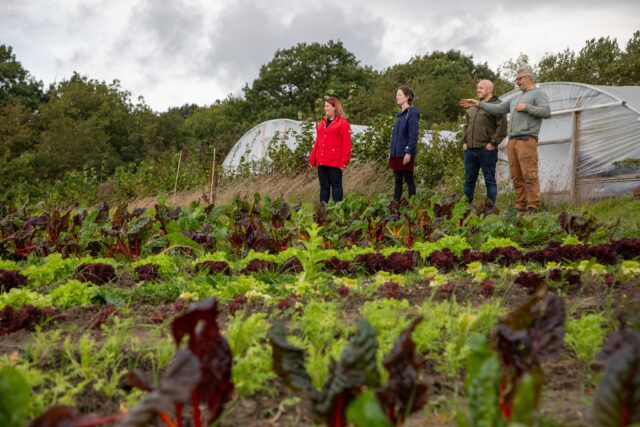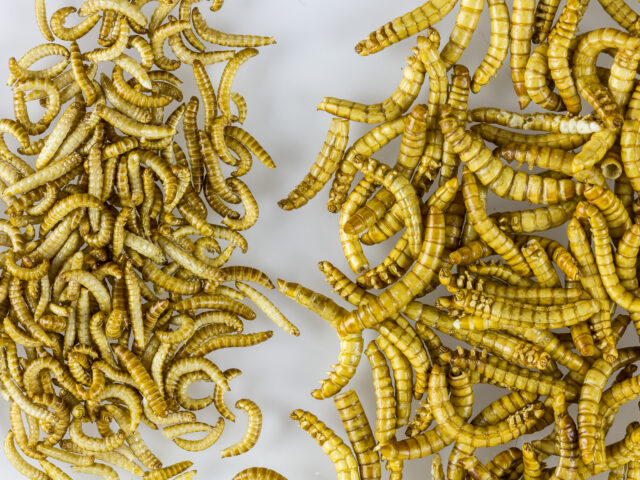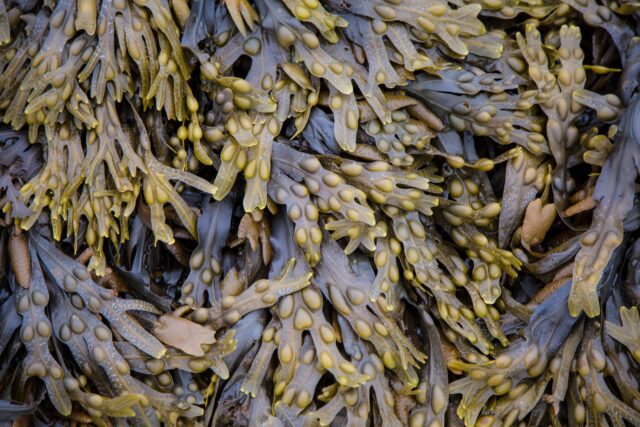Guest blog: Reducing reliance on soy-containing feed and synthetic fertilisers in the UK
Words by Eunomia Research and Consulting

The Co-op Foundation commissioned Eunomia Research & Consulting to explore solutions to reduce UK farmers’ reliance on soy-containing animal feed and synthetic fertiliser. The study aimed to contextualise and inform the decision-making of Carbon Innovation Fund Round 2 (CIF2), through which the Foundation, in partnership with the Co-op, are funding seven organisations committed to innovating in the farming sector.
Read the full report and the appendix
Why Focus on Feed & Fertiliser?
Reducing reliance on soy-containing animal feed and synthetic fertilisers are two of the key environmental challenges facing farmers today.
Soy production is expanding worldwide, driving deforestation and over 90% of all soy produced is used to feed livestock. The global agricultural system is also heavily reliant on synthetic fertiliser to supply fields with enough nitrogen, phosphorus, and potassium. Producing synthetic fertiliser emits significant amounts of greenhouse gases (GHGs) and can degrade soil health, pollute water bodies, and release ammonia when applied to fields.
In recent decades, UK farmers have imported most of their animal feed and fertiliser. However, as prices of animal feed and fertiliser have spiralled, the industry has seen interest and innovation in affordable and sustainable alternatives, as well as ways to reduce their use altogether.
What’s in the report?
This study, conducted between February-May 2023, focused on four solutions to reduce reliance on soy-containing animal feed, and 17 solutions to reduce reliance on synthetic fertiliser. The study reviewed low and high tech solutions in terms of their transformation potential and scalability; wider environmental impact; development stage; barriers to uptake; strength of evidence; and applicability to the UK context.
Key Findings
Soy Production
Land needs to be released from agriculture to halt deforestation and facilitate natural regeneration. To do this while maintaining food security, we need to find alternatives to soy that require less land. One solution assessed aims to grow more pulses in the UK that can be fed to animals instead of soy. While this onshores production of a valuable crop to the UK and diversifies cropping, this could displace the production of other homegrown foods to countries abroad, meaning the net change in land use is minimal.
Food waste offers two distinct solutions. It can be fed directly to animals in some circumstances, or become feed via the use of insect farming to generate an alternative feed. These are attractive options for the medium term, but ultimately reducing food waste is a greater environmental priority, so the volume of food waste is limited and should fall over time. There are also additional challenges, as food waste’s nutritional content can be variable, and when fed directly to livestock, can cause safety concerns.
A novel solution, with high potential to reduce global agricultural land use, is microbial protein. This involves micro-organisms synthesising protein through precision fermentation of organic waste feedstocks. This process creates new sources of proteins which can be used for animal feed, rather than converting existing protein. While this solution could be highly transformative, it is still in early development and requires organic feedstock (i.e. food waste or agricultural residues), for which availability is a key limiting factor.

Synthetic Fertiliser
There are two main categories of ‘solutions’ to reduce reliance on synthetic fertiliser: 1) those that reduce the need for fertilisers of any kind, and 2) those that replace the use of synthetic fertilisers with organic alternatives. The optimal approach is to primarily reduce the overall demand for fertilisers, whilst substituting the remaining demand (as far as possible). Demand reduction is a win-win for both farmers and the environment as it lowers input costs whilst reducing emissions and pollution.
Solutions which aim to reduce the need for fertiliser include: controlled release fertilisers; precision fertiliser technology; leguminous cover crops; genetically modified nitrogen fixing crops (crops that could produce their own nitrogen); and multi-species swards. These all show promise and may be applicable across different farm types, however they share some common barriers to implementation, such as higher costs, the need to increase farmers’ knowledge, and the risk of negative environmental consequences, such as soil contamination.
Solutions which aim to replace synthetic fertiliser with organic alternatives include: compost; manure; seaweed; human urine; and nutrients gathered from wastewater. These solutions reduce the GHGs associated with fertiliser production and may have other environmental benefits for soil. However, these organic alternatives do not overcome all environmental challenges; some still have the potential to leach nutrients into water bodies if over-applied, or can still release ammonia into the atmosphere.

In conclusion
There is no silver bullet solution to reducing the reliance on either soy used for animal feed or synthetic fertilisers. The food system is too diverse for a one-size-fits all approach and so a sustainable system is likely to be characterised by a diverse application of solutions, applied according to local circumstances. Even in an optimised future system, there may still be a role for some soy-containing feed and synthetic fertiliser. For example, synthetic fertilisers may still be useful to provide nutrients in localised areas where crops may still be deficient.
What are the next steps for the Fund?
Round two of the Carbon Innovation Fund (CIF2) is supporting seven projects across the UK, which are testing and scaling up solutions that have been included in this research study.
Eunomia and the Co-op Foundation will be providing learning and evaluation support to the funded partners throughout their projects’ duration (running between 1-3 years). Sign up to the Co-op Foundation’s blog below to get updates on how the projects progress and find out their key learnings from testing and scaling up innovative solutions.
We would like to thank Dr. Donal Murphy-Bokern for his invaluable advice and for reviewing this report.
You can help the Co-op Foundation to do even more by donating to the Foundation online or giving your Co-op Member Reward.